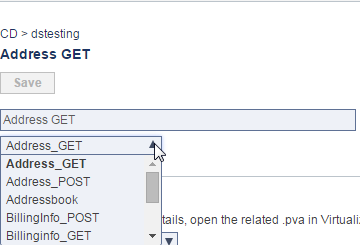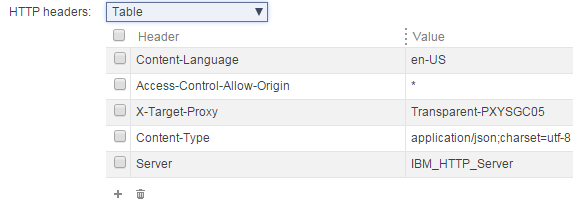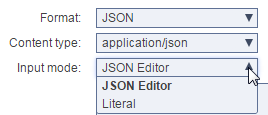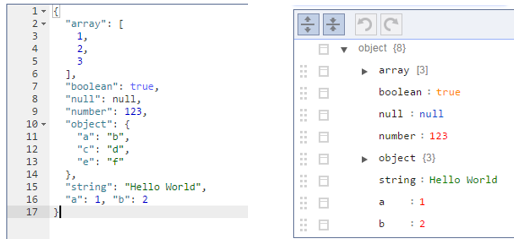...
- If the containing virtual asset includes multiple data sources, you can review and change which data source is used to parameterize this responder. See Parameterizing with Data Source and Data Bank Values for details.
- (Optional) In the Response area, add HTTP headers if desired.
- Click Add.
- Specify a header name (this is case insensitive) and value. You can enter values in either table mode or literal mode.
Here is an example in literal mode:
Here is that same example in table mode.
- Set the appropriate payload format and media type (in the Content type and MIME type boxes).
Specify the payload in literal text editor, the JSON editor, or the XML editor (see Editing JSON Messages and Editing XML Messages for details and tips).
Info title Tip: Using {var_name} If you’re familiar with Virtualize or SOAtest, you can use the standard ${var_name} notation to reference variables and data source values that are defined for the responder suite.
When you are working with JSON, a special notation is used for parameterizing a number or boolean field within a JSON message: ${number:<value>} or ${boolean:<value>}. For example, to parameterize a number field with the column Count, you would use ${number:Count}.- Configure correlations as described in Adding and Editing Message Responders..
(Optional) Specify a request URL template. Enter a URL that is typical/representative of the URLs that the application under test would serve (and the responder should simulate). If the responder is created through the traffic wizard, this field will be populated with the URL from one of the requests in the traffic corresponding to this responder.
Info The value specified here will be used to configure URL Paths and URL Parameters correlation settings for responder correlations and data source correlations.
- (Optional) Specify a request message template. This template will be used to automatically populate the expected response when generating XPath parameters in Virtualize (e.g. in the message request XPath dialogs for data source correlation and responder correlation or in the multiple response XPath dialog).
...




